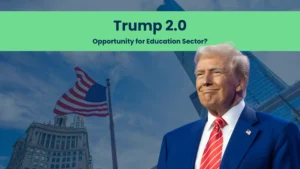In an era of rapid globalization and technology-driven transformation, education systems worldwide have been working to provide students with a wide array of choices to help them thrive in diverse fields. From traditional subject streams like Science, Arts, and Commerce to specialized courses in AI, entrepreneurship, digital marketing, and game design, the educational landscape is evolving at breakneck speed. But as schools, universities, and policymakers expand these offerings, an important question emerges: Are we offering too many educational paths, and could this abundance of choice be detrimental to students?
The Choice Overload Phenomenon
The concept of “choice overload,” popularized by psychologist Barry Schwartz in his book The Paradox of Choice, posits that while choice can foster autonomy and engagement, too many options can lead to anxiety, indecision, and dissatisfaction. In education, this has manifested in students feeling overwhelmed by the sheer number of subjects, career paths, and extracurricular activities available to them. According to a study by the Journal of Educational Psychology, students who are presented with a multitude of academic choices often experience “decision fatigue,” which negatively impacts their academic performance and mental health.
Data Highlights the Growing Complexity
Data from the National Center for Education Statistics (NCES) shows that, in the U.S. alone, there are more than 1,800 distinct academic programs at the undergraduate level, ranging from core disciplines to niche fields like social media analytics and cybersecurity. Similarly, India’s higher education system, overseen by bodies like the University Grants Commission (UGC), now offers a variety of vocational and interdisciplinary courses, leaving students grappling with decisions about which paths will secure the best opportunities.
Moreover, a recent report by McKinsey & Company found that over 60% of students in developed countries feel unsure about their educational and career choices. They often attribute this confusion to the abundance of available options, leading to uncertainty about which path aligns with their interests and future job market demands.
Impact on Mental Health and Well-being
The complexity and scale of educational choices are also having a tangible impact on students’ mental well-being. A study by The New York Times reveals that over 40% of U.S. high school students report feeling “overwhelmed” by the pressure to make the “right” educational choices. In India, similar concerns were highlighted in the National Mental Health Survey, which found that academic stress is the leading cause of mental health issues among adolescents.
Many students are not just navigating which subjects to study but also facing choices regarding the mode of education—online, hybrid, or in-person—along with decisions about extracurricular activities, internships, and future specializations. All of this can compound stress levels and contribute to increased rates of anxiety and depression among youth.
The Dilemma for Educators and Policymakers
Educational institutions are constantly striving to offer more comprehensive and tailored learning paths to attract students and remain competitive. While this flexibility is critical for accommodating diverse learning styles and interests, it also requires institutions to provide robust guidance and counseling services. In India, however, the NCERT estimates that there is only 1 counselor available for every 7,000 students in government schools, a gap that makes it difficult to help students navigate the maze of educational pathways.
Similarly, teachers are now required not only to deliver core subject knowledge but also to guide students in interdisciplinary fields that they may not be familiar with themselves. This increases the burden on the education system as it struggles to keep up with rapid changes in the knowledge economy.
Finding Balance: Offering Choice with Structure
So, how can educational institutions strike the right balance between offering choices and maintaining structure? Experts suggest that the key lies in providing “guided choices.” This means giving students a curated selection of options tailored to their abilities, interests, and long-term goals, rather than an open-ended array of possibilities.
Countries like Finland have embraced this approach by integrating comprehensive career guidance programs into their curriculum, starting as early as middle school. These programs allow students to explore a variety of fields through hands-on experiences before they are required to make critical academic decisions. Similarly, Australia’s Pathways for Learning model provides students with a structured framework that outlines a clear progression of subjects and skills, reducing the overwhelm caused by too many choices.
Conclusion: A Call for Responsible Choice Design
As education systems continue to diversify, it is imperative that we critically evaluate whether the abundance of choices is truly serving the needs of students. While the intent behind offering multiple educational paths is to create more personalized learning experiences, we must ensure that the process doesn’t become paralyzing for the very students it aims to benefit. By designing choice systems that are thoughtful, guided, and supported by adequate counseling, we can empower students to make informed decisions that will shape their futures without overwhelming them in the process.





